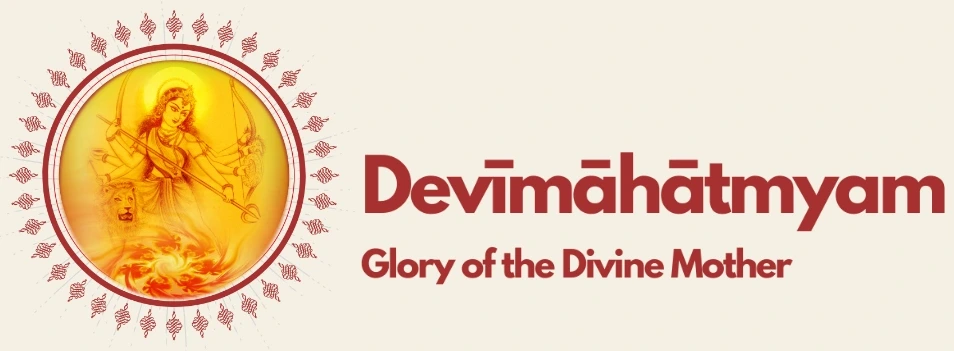Sri Aurobindo and The Mother On Śaktitattvam
“The Mahashakti, the universal Mother, works out whatever is transmitted by her transcendent consciousness from the Supreme and enters into the worlds that she has made; her presence fills and supports them with the divine spirit and the divine all-sustaining force and delight without which they could not exist.”
Sri Aurobindo
“Adyashakti is the original Shakti, therefore the highest form of the Mother.
Only she manifests in a different way according to the
plane from which one sees her. Sri Aurobindo
In Sri Aurobindo’s spiritual perspective, the Shakti tradition receives a fresh and dynamic articulation. While traditional Shakta philosophy honors the Divine Mother as the fundamental Energy that underlies creation, Sri Aurobindo extends this understanding—he discloses that Shakti is not merely the source of the universe but also the transformative force that directs its evolution. She is ‘Adyashakti’, the original Consciousness-Force, which is both transcendent and immanent, governing the vast galaxies as well as the most subtle movements of the human spirit. Sri Aurobindo elucidates the Divine Mother’s operations through four significant Powers: Maheshvari, Mahakali, Mahalakshmi, and Mahasarasvati, which oversee the soul’s ascent.
Maheshwari:
Sri Aurobindo has proclaimed “Imperial MAHESHWARI is seated in the wideness above the thinking mind and will and sublimates and greatens them into wisdom and largeness or floods with a splendour beyond them. For she is the mighty and wise One who opens us to the supramental infinities and the cosmic vastness, to the grandeur of the supreme Light, to a treasure-house of miraculous knowledge, to the measureless movement of the Mother’s eternal forces.” Maheshvari, the foremost of the manifestations, represents the vastness of transcendent Wisdom. She is expansive like the boundless sky, tranquil like the silent Himalayas. She embodies radiant understanding, quiet authority, and a patience that transcends millennia. When She descends upon the seeker, the mind expands into elevated knowledge; the heart attains peace; the soul discerns the divine purpose underlying all existence.
Mahakali:
Mahakali is the fierce Power of transformative force. She does not embody gentle persuasion but rather the lightning strike that dispels ignorance and falsehood. According to Sri Aurobindo “MAHAKALI is of another nature. Not wideness but height, not wisdom but force and strength are her peculiar power. There is in her an overwhelming intensity, a mighty passion of force to achieve, a divine violence rushing to shatter every limit and obstacle. All her divinity leaps out in a splendour of tempestuous action; she is there for swiftness, for the immediately effective process, the rapid and direct stroke, the frontal assault that carries everything before it. Terrible is her face to the Asura, dangerous and ruthless her mood against the haters of the Divine; for she is the Warrior of the Worlds who never shrinks from the battle.” Her swiftness is irresistible, and her will is unwavering. To those who yield to Her, She bestows courage, strength, and the fire of tapasya. Conversely, to those who resist, She transforms into the fierce Mother who dismantles the ego’s defiance so that truth may triumph. Sri Aurobindo describes her as “terrible in love” — for even her fury is an expression of divine compassion.
Mahalakshmi:
Mahalakshmi represents the subtle grace of love, beauty, and harmony. In her domain, everything becomes rhythm, sweetness, and charm. She embodies the secret of divine attraction — not mere sentimental emotion, but the elevated love that unites souls with God and one another. Sri Aurobindo has stated “Wisdom and Force are not the only manifestations of the supreme Mother; there is a subtler mystery of her nature and without it Wisdom and Force would be incomplete things and without it perfection would not be perfect. Above them is the miracle of eternal beauty, an unseizable secret of divine harmonies, the compelling magic of an irresistible universal charm and attraction that draws and holds things and forces and beings together and obliges them to meet and unite that a hidden Ananda may play from behind the veil and make of them its rhythms and its figures.” Mahalakshmi refines thought, purifies emotion, and brings joy even amidst austerity. Her touch transforms life into a garland of bliss.
Mahasaraswati:
Mahasarasvati symbolizes the power of flawless execution. She is the diligent craftswoman who meticulously works in detail, laying foundation after foundation with precision. While Mahakali dismantles the old, Mahasarasvati constructs the new. Sri Aurobindo has mentioned “MAHASARASWATI is the Mother’s Power of Work and her spirit of perfection and order. The youngest of the Four, she is the most skilful in executive faculty and the nearest to physical Nature. Maheshwari lays down the large lines of the worldforces, Mahakali drives their energy and impetus, Mahalakshmi discovers their rhythms and measures, but Mahasaraswati presides over their detail of organisation and execution, relation of parts and effective combination of forces and unfailing exactitude of result and fulfilment. The science and craft and technique of things are Mahasaraswati’s province.” Mahasarasvati is the goddess of discipline, method, organization, and skill. In the life of the seeker, she manifests as perseverance, clarity of work, and exactness in truth.
These four aspects are not distinct deities but rather expressions of the singular “Supreme Shakti.” True devotion lies in recognizing and invoking all of them in harmony — wisdom devoid of love becomes frigid, strength lacking precision becomes destructive, and order without expansiveness becomes rigid. Therefore, the sadhana is not to flee from life but to spiritualize it through their collective Presence.
In Sri Aurobindo’s Integral Yoga, Shakti is regarded as both the Mother deserving of worship and the Power to be realized. The ultimate aim is not to achieve liberation from the world, but rather the ‘manifestation of the Divine in life itself.’ As devotion deepens, the seeker transcends ego-driven actions and is instead inspired by a higher Force. Speech transforms into mantra, work evolves into worship, and life becomes a canvas for divine manifestation. Sri Aurobindo elucidates that the Divine Mother reveals Herself through four formidable Powers — Maheshvari, Mahakali, Mahalakshmi, and Mahasarasvati — each symbolizing a unique aspect of the supreme energy that directs both the individual and the cosmos.
Collectively, these four Powers are not distinct deities but rather four manifestations of the One Supreme Shakti. Their unity is crucial for spiritual manifestation. Wisdom devoid of strength proves ineffective; strength lacking love becomes harsh; love without precision may lead to indulgence; and precision without expansiveness results in rigidity. Therefore, the aspirant is encouraged not to venerate a single aspect alone, but to embrace the complete radiance of the Divine Mother. For Sri Aurobindo, devotion transcends mere ritual; it embodies an inner surrender — a complete offering of one’s being to Her divine workings. When an individual genuinely opens to Her, life transforms from a struggle of the ego into a conscious instrument for the supramental descent. Awakening the Shakti Tattva within allows Maheshvari’s tranquility, Mahakali’s intensity, Mahalakshmi’s gentleness, and Mahasarasvati’s endurance to shape the soul into its divine essence. This represents the path, the power, and the promise of spiritual transformation. The Divine Mother has also revealed the secret that the universe is not merely a manifestation of blind matter or mechanical laws. Rather, it represents the unfolding of a supreme Energy of Love, Knowledge and Will of the Supreme Shakti, expressing itself through innumerable forms. This supreme Energy is the Divine Mother — the living Essence behind all development and advancement. She is neither remote nor merely symbolic; She is actively engaged, shaping destinies, elevating consciousness, and guiding humanity towards a more elevated existence. Consequently, the journey of spiritual manifestation is not characterized by a retreat from the world but by a conscious engagement in Her Work. To be devoted to Shakti means to permit Her Power to function within us. In this context, devotion transcends mere emotion or ritualistic worship. It embodies ‘surrender’ — a total offering of the heart, mind, body, and will to the Divine Mother, enabling Her to shape the seeker into a perfected instrument.
Sri Aurobindo has noted that the Chandi Mahatmya, deservedly one of the best known in sacred literature.” Consequently, the Shakti tradition, viewed through the lens of Sri Aurobindo, emerges as a vibrant pathway of transformation. It encompasses not only the veneration of the Mother but also the aspiration to become a conscious conduit of Her Power. Awakening Her within signifies awakening the future of humanity. She embodies the supreme Energy, the eternal Guide, and the radiant Destiny toward which all beings are instinctively progressing. In Sri Aurobindo and the Mother’s philosophy, Shakti is not merely an abstract metaphysical concept; rather, it is the supreme Reality in motion — the Divine Mother, representing the dynamic aspect of the Absolute. While Purusha serves as the silent Witness, Shakti acts as the eternal Doer. She is the Consciousness-Force that generates, sustains, and transforms worlds. To comprehend Shakti Tattva
through the perspective of Sri Aurobindo and the Mother is to acknowledge that the cosmos is not ruled by mechanical laws but by a radiant Will of Love.

